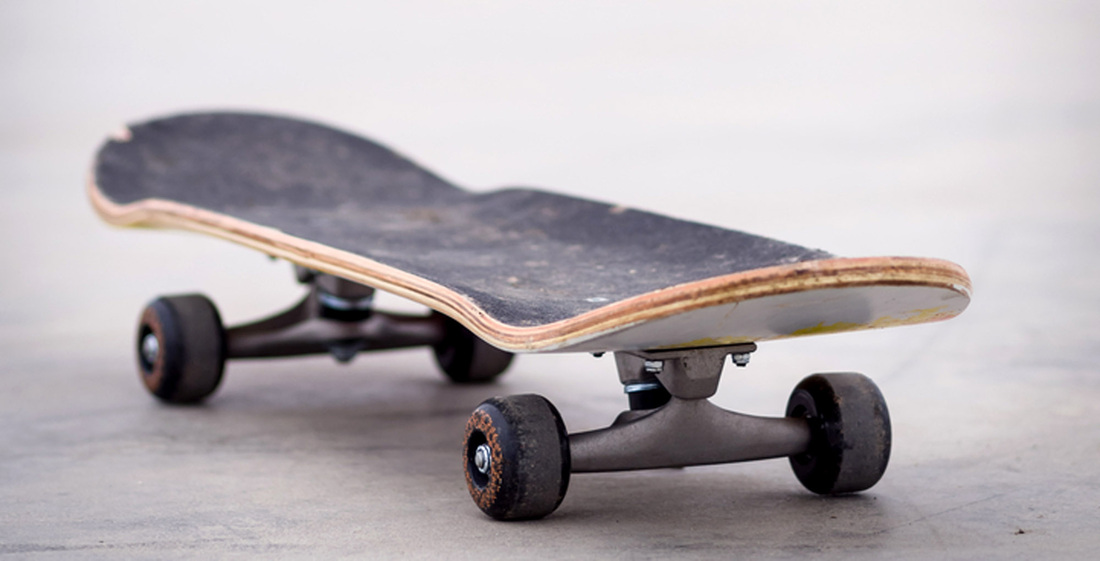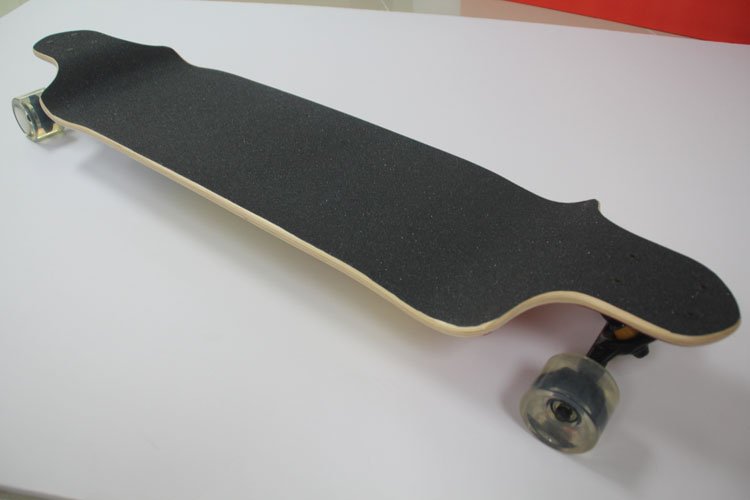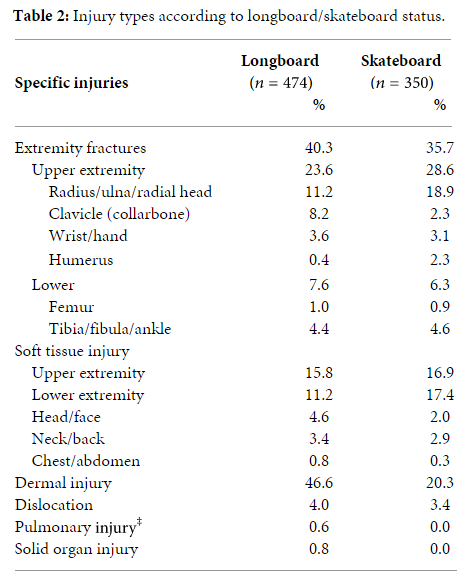|
A young man was admitted to the Christiaan Barnard Trauma & Emergency Centre after sustaining a skateboard injury, ultimately resulting in the removal of his spleen. The patient reports having taken part in a skateboarding competition (Longboarding), recently held in Grabouw, where he was involved in a collision with other competitors and as a result struck a tree at high speeds.
After the initial assessment by the medical standby team, the patient was taken home by his parents, and then later reported to hospital. ER diagnostics relieved a severely damaged spleen, and a fractured left wrist. In addition to the splenectomy, the young man's wrist required repair with the aid of a plate in order to stabilize the fracture. The patient is currently still in hospital, but well on his way to a healthy discharge. |
So what is the difference between longboarding and traditional skateboarding?
As defined by an unknown skater, "Longboards are longer, obviously. The trucks are at the very ends of the longboard whereas they are a few inches in on each end of a skateboard. Thus skateboards require continuous pushing and are mostly used for tricks and recreation. Longboards can go very far with minimal pushing which makes them good for cruising and getting from place to place. Longboards aren't usually used for tricks, but they can be. Outside of cruising they can be used for hills and races."
Common Injuries Associated with Skateboarding:
An article entitled " Boarding Injuries: The Long and the Short of It", published in the Journal of Emergency Medicine International reported a comparison of statistics on injuries associated with both skateboarding and longboarding as seen in the trauma departments of various US hospitals.
An article entitled " Boarding Injuries: The Long and the Short of It", published in the Journal of Emergency Medicine International reported a comparison of statistics on injuries associated with both skateboarding and longboarding as seen in the trauma departments of various US hospitals.
Injury Prevention:
General Precautions
Wear Skateboarding Protective Equipment
Young Children Skateboarding
Skateboarding is not recommended for young children because they are still growing and do not yet have the physical skills and thinking ability a person needs to control a skateboard and ride it safely. 60% of skateboard injuries involve Children under age 15. Most of those injured are boys.
Highest Risk
According to the American Academy of Pediatrics (AAP):
When young children are involved in skateboarding accidents, they are often injured severely. Skateboarding is a special risk for young children because they have:
General Precautions
- Practice skateboarding safely and use protective equipment.
- Learn the basic skills of skateboarding, especially how to stop properly.
- Use professionally designed "bowls" and "ramps" or other designated skateboarding areas that are located away from motor vehicle and pedestrian traffic.
- Don't perform tricks beyond your ability.
- Use a quality skateboard
- Keep your skateboard in proper working order
- Do not use headphones while skateboarding.
- Never put more than one person on a skateboard.
- Wear proper protective equipment
Wear Skateboarding Protective Equipment
- Helmet
- Wrist guards
- Knee and elbow pads
- Shoes
Young Children Skateboarding
Skateboarding is not recommended for young children because they are still growing and do not yet have the physical skills and thinking ability a person needs to control a skateboard and ride it safely. 60% of skateboard injuries involve Children under age 15. Most of those injured are boys.
Highest Risk
- Inexperienced skateboarders. Those who have been skating for less than one week suffer one-third of injuries, usually caused by falls.
- Skateboarders who do not wear protective equipment. Every skateboarder should wear standard safety gear. This includes a helmet, wrist guards, elbow and knee pads and appropriate shoes. Skateboarders who perform tricks should use heavy duty gear.
- Skateboarders who go near traffic or use homemade skateboard ramps. Both activities are particularly dangerous.
- Experienced skateboarders who encounter unexpected surfaces or try risky stunts.
- Irregular riding surfaces, rocks or other debris can cause you to fall. You can stumble over twigs or fall down slopes.
- Wet pavements and rough or uneven surfaces can cause a wipeout.
- Avoid risky behaviour. Don't skateboard too fast or in dangerous or crowded locations.
According to the American Academy of Pediatrics (AAP):
- Children under age 5 years old should never ride a skateboard.
- Children aged 6 to 10 years old need close supervision from an adult or trustworthy adolescent whenever they ride a skateboard.
When young children are involved in skateboarding accidents, they are often injured severely. Skateboarding is a special risk for young children because they have:
- A higher centre of gravity, less development and poor balance. These factors make children more likely to fall and hurt their heads.
- Slower reactions and less coordination than adults. Children are less able to break their falls.
- Less skill and ability than they think. Children overestimate their skills and abilities and are inexperienced in judging speed, traffic and other risks.
An Injury and Prevention Awareness Project brought to you by Christiaan Barnard Memorial Hospital Trauma & Emergency Centre.





 RSS Feed
RSS Feed
